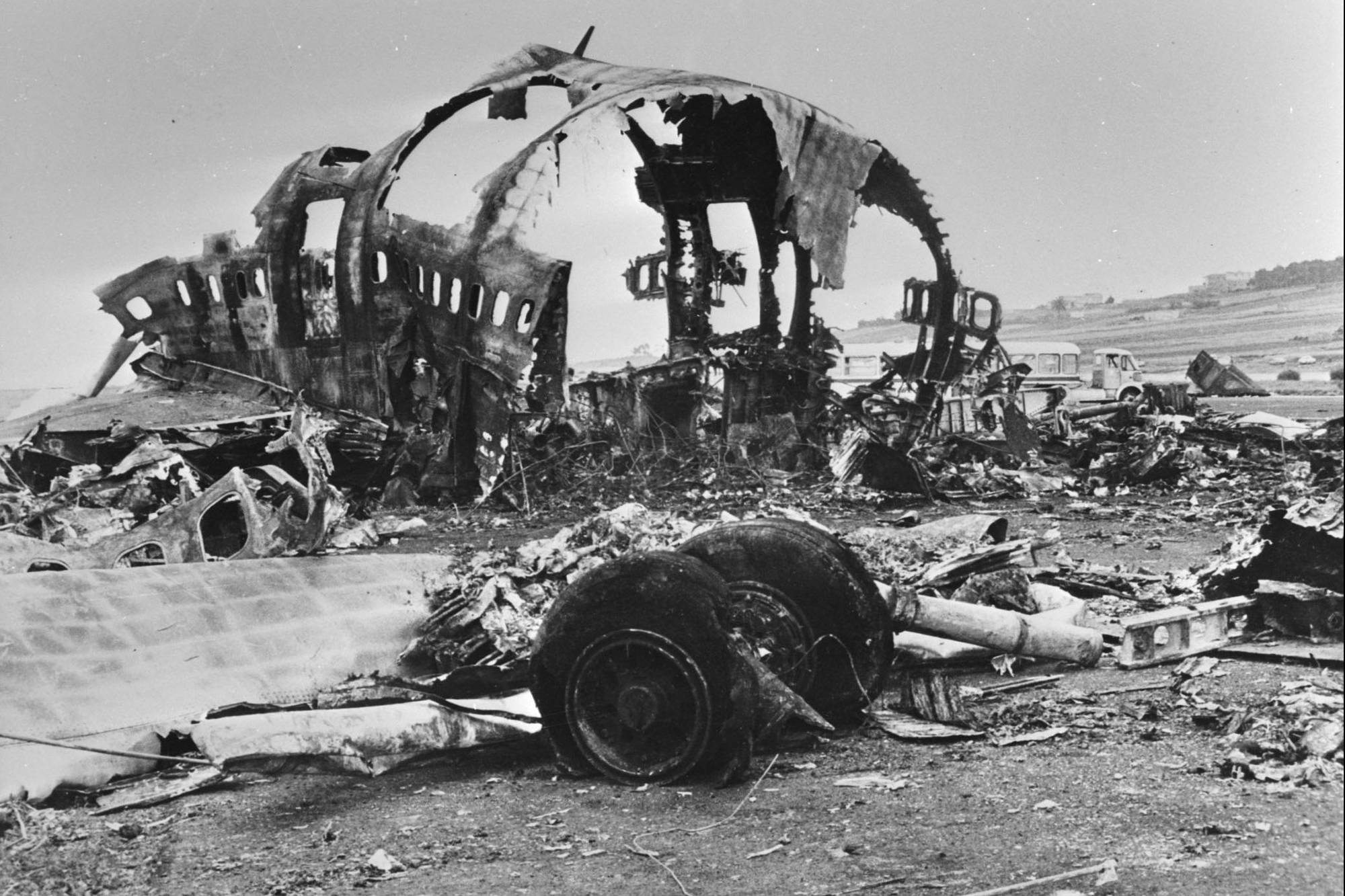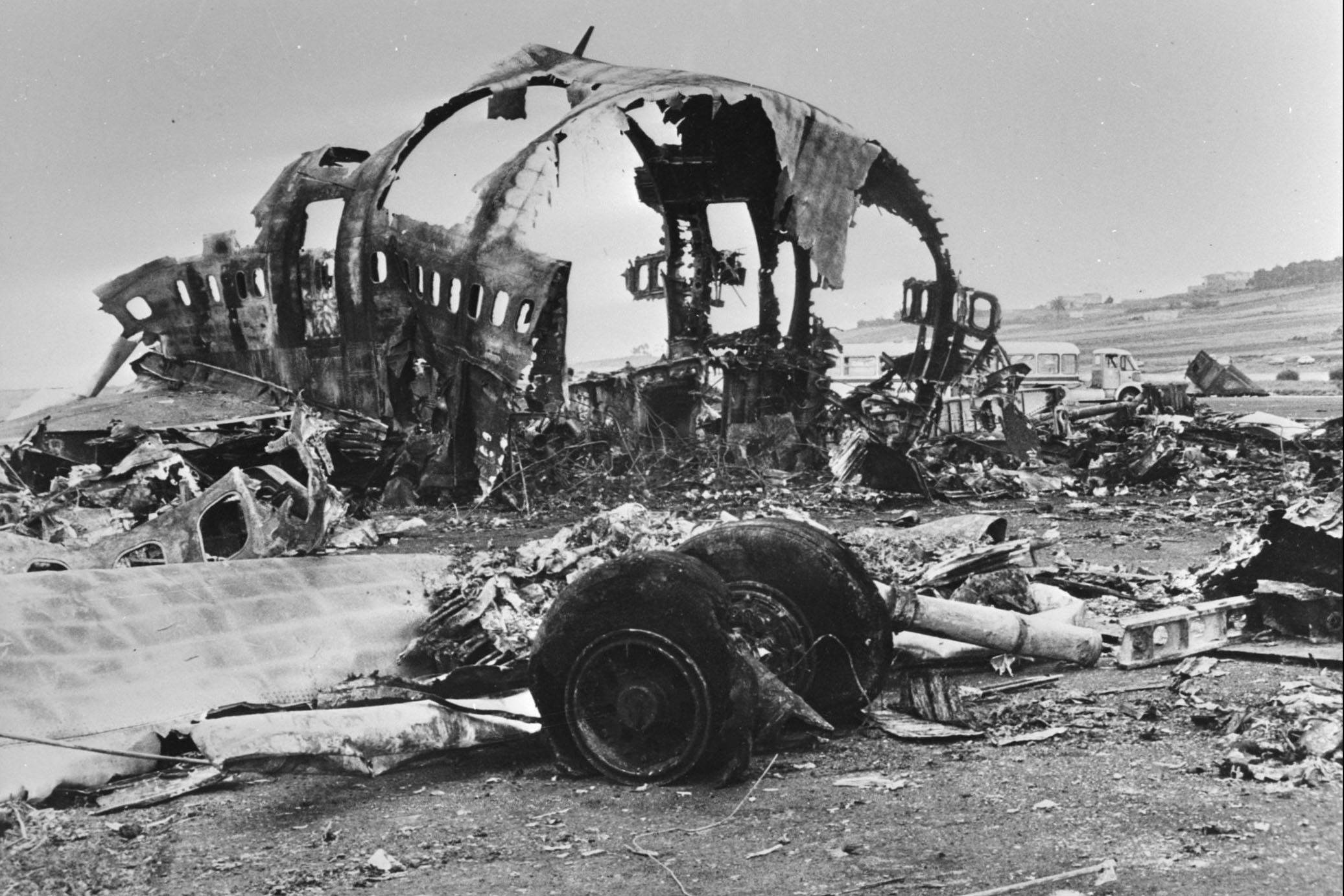Did you know that the deadliest disaster in aviation history happened on Tenerife? In March of 1977, two planes collided at Tenerife North Airport, resulting in the loss of 583 lives. It was an event which shocked the world, and forever changed airline safety standards.
The story began with a bomb. On the morning of March 27th, members of the Canary Islands Independence Movement exploded a device in the airport of Las Palmas, Gran Canaria, injuring six people. They also issued a warning that a second bomb was due to explode. As a result, all flights arriving into Las Palmas were diverted to nearby Tenerife.

At the time, the small airport outside La Laguna was the only one on Tenerife, and was known as Los Rodeos (the name would later change to Tenerife North, once a larger airport was built in the south). With just a single runway and taxiway, Los Rodeos wasn’t nearly large enough to accommodate all the incoming traffic, and planes were forced to park wherever they could find space.
And then the fog rolled in, reducing visibility to almost nothing. But despite the low visibility and crowded conditions, flights were allowed to continue. A 747 from KLM misinterpreted instructions from the control tower, and accelerated for takeoff, while another 747 from Pan Am was still taxiing. By the time the pilots saw each other through the fog, it was too late. A last-ditch evasion effort was fruitless, and the airplanes collided at about 260 kmh (160 mph). Everyone aboard the KLM flight lost their lives, along with 335 of the 396 aboard the Pan Am flight.
Because of the role miscommunication played in this disaster, the aviation industry introduced standard phrases to be used around the world, and prioritized English as a shared language. Another change was to the power dynamic in the cockpit — an in-depth audit determined that the KLM crew was overly deferential to their captain, and kept quiet even when they knew he was making a mistake. The disaster might have been avoided had they spoken up. A modern training methodology called Crew Resource Management, which seeks to eliminate accidents caused by human error, has its origins in the Tenerife disaster and is now taught as a standard around the world.
-From our Tenerife Travel Blog
Travel Resources for your trip to Spain
Recommended by TravelFeed
Flights: We recommend checking Kiwi.com to find the best and cheapest flights to Spain.
Accomodation: Explore the best places to stay in Spain on Booking.com, Agoda and Hostelworld.
Travel Insurance: Medical emergencies abroad can be pricey, but travel health insurance is not. We always use SafetyWing for affordable and reliable coverage.
Car Rental: For hassle-free car hiring, DiscoverCars is our trusted choice with a wide selection of vehicles.
Internet: Got an eSIM compatible phone? Airalo is perfect for reliable internet access during your trip. Just install it before you go, and you're set!
Day Trips & Tours: We recommend GetYourGuide for a variety of well-organized and enjoyable activities.
Travel Planner: Need a hand planning? Our free travel planner chatbot is your personal guide to Spain. Chat now.
Disclosure: Posts on TravelFeed may contain affiliate links. See affiliate disclosure.

